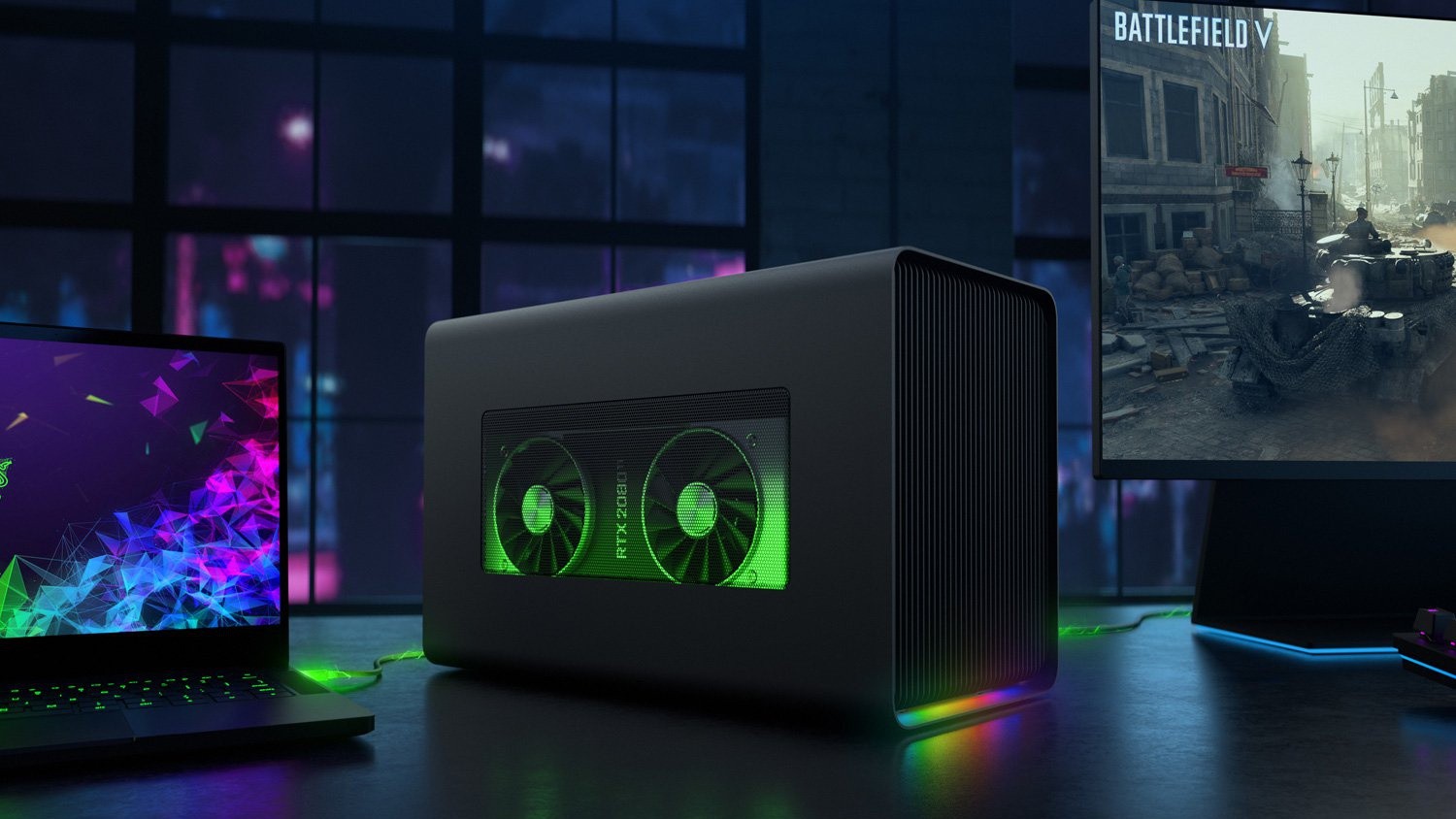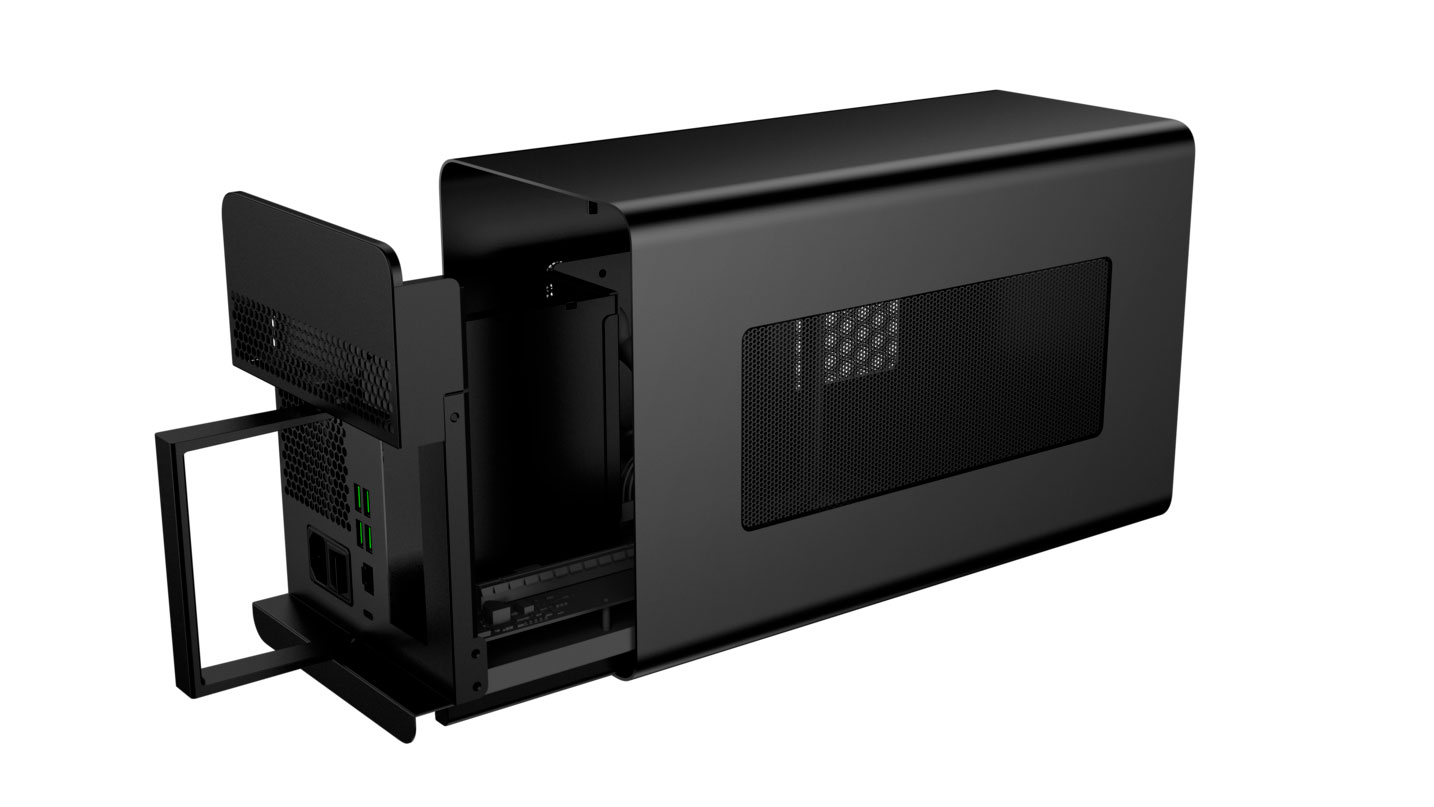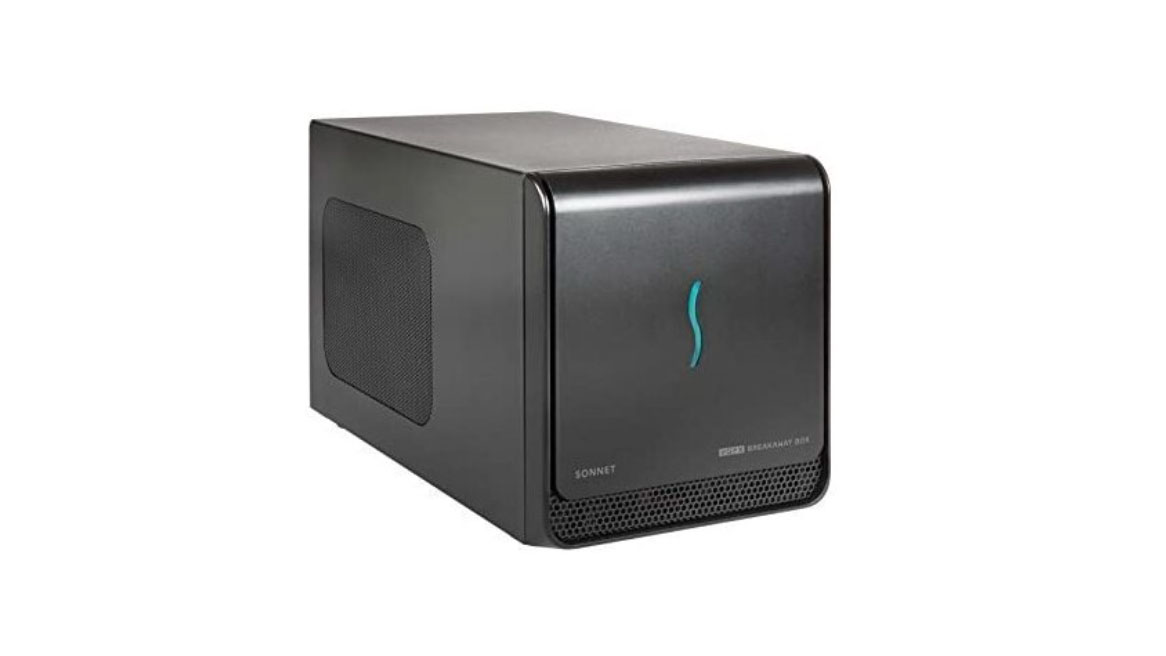eGPUs: top 3 external GPUs for 3D artists
eGPUs are a great way to supercharge your 3D workflow. We present the best external GPUs available today.

The best eGPUs, aka external GPUs, make it easy to upgrade your computer's graphics performance whenever you need to.
The idea is straightforward. Take any desktop graphics card, capable of delivering the kind of performance needed to run professional 3D applications, and put it into an external enclosure connected to a PC, rather than housed inside a tower chassis or shrunk down to fit into a laptop. Using Thunderbolt technology, a eGPU offers the freedom to use 3D software on devices where the option for powerful graphics hardware otherwise doesn't exist.
Buy a laptop with discrete graphics and you're forever stuck with that specification. But with an external enclosure you can always swap out the GPU and upgrade it. With a number of manufacturers to choose from, eGPUs also have varied features – and that's where our handy guide will cut through the noise. In our guide to eGPUs, we look at the three external GPU enclosures, and give you the information you need to compare them.
Meanwhile, if you want to compare graphics cards too, head to our roundups of the best graphics cards and the best budget graphics cards. And also don't miss our guide to the top 3D modelling software and best 3D rendering laptops around.
eGPUs: Our test
Alongside the eGPUs, we used an up-to-date Dell XPS 1390, a light 13-inch 2-in-1 laptop with a fast 10th-generation Intel Core i7 processor and Thunderbolt, but no discrete GPU, making it a perfect candidate to be paired with external graphics.
eGPU enclosures work with Nvidia or AMD graphics cards. We've assembled each enclosure and will report back on both the performance and experience of using an eGPU for 3D tasks, along with some general findings from living with this technology as part of daily life.

01. Razer Core X Chroma
Specifications
Reasons to buy
Reasons to avoid
First up in our list of eGPUs is the Core X Chroma – one of the most popular eGPUs around. Currently rated number two on specialist website eGPU, not only does it have a really beefy 700W PSU that is sure to handle the widest range of top-end graphics cards, but it has been kitted out with a full range of four USB-A ports and Ethernet.
It's very useful. Plug in a laptop and one cable charges the battery, adds USB ports, Ethernet and graphics performance, with an external display. We suspect that has something to do with Razer being well known for selling ultra-thin powerful laptops that sometimes lack USB or Ethernet built into the chassis.
The Chroma serves up these ports via a small add-in card placed in a PCIe x1 slot above the graphics card. Yes, you can remove the add-in card and replace it with whatever you choose, offering a way to add any PCIe device to a laptop, something that has previously been impossible.
Ventilation is great, with exhaust ports on both sides and at the rear. There's also a physical power switch, which provides some useful tactile feedback to let you know the device is turned off. It opens via an excellent mechanism, where you pull a handle at the back and slide it out. And no external power brick is needed either – top marks for design.
But squeezing all this into one case means some whopping dimensions. The Core X Chroma is 37.4cm deep, 16.8cm wide and weighs a hefty 6.91kg. It's about the size of a mini-ITX PC case and not particularly portable. Also, despite the decent set of exhausts, noise levels aren't great. Thankfully though, it's very straightforward to replace the included fan with something more premium and improve the airflow considerably.

02. Sonnet Breakaway Box 550
Specifications
Reasons to buy
Reasons to avoid
Sonnet sells two different eGPUs, the Breakaway Box, which is a barebones eGPU enclosure sold without a graphics card, and the Breakaway Puck, which is smaller and sold with an integrated AMD Radeon RX 560 GPU – we have the former on test.
Sonnet sells a number of different power configurations. We're using the 550W version (not in production but you can pick it up at a range of secondary retailers) but there is also a 650W model still in production. Its 550W power supply delivers up to 375W of power to graphics cards, with two integrated eight-pin power connectors. Sonnet's compatibility page lists Nvidia cards up to a GeForce RTX 2080 and AMD Radeon 5700 XT in this enclosure.
There's a plastic facia with a blue light, and the metal case slides open to reveal the tiny custom motherboard, which has a single PCIe slot but space for a dual slot graphics card. There's a single fan that looks like it could be easily replaced with something more efficient, and a small bracket that prevents the GPU from becoming loose.
There are no additional USB ports or expansion options. The unique selling point of the Breakaway Box is its attractive low price. It undercuts every other eGPU we've looked at, which is welcome given that you may need to also factor a graphics card purchase into your budget.
It's not particularly small or light. It closely resembles Razer's Core X Chroma, with a large, chunky design, but that can be an advantage. Plus, it's not particularly noisy.
Given the relative affordability of the Breakaway Box, we were generally impressed by it. It's a no-frills design but a great, inexpensive way to get an eGPU up and running, particularly if you opt for the lower PSU option. For most people who just need external graphics support, this enclosure will do the trick.

03. Akitio Node Titan
Specifications
Reasons to buy
Reasons to avoid
Akitio is Other World Computing's eGPU enclosure brand, just as compatible with Windows PCs as Macs. The Node Titan is the most recent external graphics enclosure, coming with an impressive specification, and an all-metal build in a shade of dark grey that feels solid and high quality.
It has unique removable thumbscrews, making it very easy to open the enclosure and replace your card. There's also a retractable handle for transport that pops up from the top. Airflow comes in via one side only. It's a relatively compact design too, 13.5cm wide, which is considerably less than both the Sonnet Breakaway Box and the Razer Core Chroma.
The Akitio has a beefy 650W internal PSU that should be able to handle a wide range of graphics cards. Another less fortunate difference is that the Akitio Node Titan can be noisy. The fan is positioned at the bottom, and although it could be removed and replaced with something more efficient, it looks a little tricky to access.
It also lacks any extra ports, which seems like a bit of a missed opportunity, given the possibilities when connecting up a Thunderbolt cable.
But in its favour, the Akitio Node Titan is fairly reasonably priced, given it can support a wide range of graphics cards. It's not as easy to find in the UK as other enclosures though. At the time of writing we had to look at some Mac-specialist vendors.
eGPUs: In conclusion
eGPUs come close to offering a nirvana of plug-and-play portable 3D hardware. Connect to any Thunderbolt-equipped kit and immediately it becomes a 3D-cable workstation, more or less. We can now answer two big questions about the technology.
Are eGPUs worth it for the performance?
In our experience, eGPUs are not entirely without performance issues. When we tested the top three models (see above), it was a bumpy ride when it comes to stability and reliability. At one point we connected a second display to the eGPU, and Windows immediately blue-screened. We had to reboot a few times to solve issues like this, where the eGPU didn't immediately work. That said, on the whole problems were few and far between. A little patience goes a long way.
We also found the bandwidth limitation of Thunderbolt 3 directly affects graphics performance with an external 4K display connected on the laptop display. On the Razer, with USB and Ethernet as well, that could affect performance further.
All four enclosures performed roughly the same in SPECviewperf and Luxmark, with usually no more than three per cent variance between them. Bear in mind though, a graphics card in an eGPU enclosure will always perform worse than when directly connected to a PC's motherboard.
Despite that limitation and the relatively modest Radeon 5700 graphics card, though, we saw results up to 10x that of Intel's 10th-generation integrated laptop graphics. Plus, we also found that the eGPU performed better on graphics-intensive tasks.
Which is the best of the eGPUs?
When it comes to assembling and setting up the Razer Core X Chroma, Sonnet Breakaway Box 550 and Akitio Node Titan, we were pleasantly surprised that build quality is generally excellent across the board. All three enclosures worked in the same way. The main differences are in the design, weight, size and the additional features that each has to offer.
Size and noise matter to many people, but for overall usefulness, the Razer Core X Chroma was our favourite, at least for use with laptops. It adds USB ports and Ethernet, has a beefy PSU and can be tinkered with more than any other enclosure. We do recommend replacing the fan though.
This content originally appeared in issue 267 of 3D World magazine, the world's best-selling magazine for CG artists. Buy issue 267 or subscribe to 3D World here.

Thank you for reading 5 articles this month* Join now for unlimited access
Enjoy your first month for just £1 / $1 / €1
*Read 5 free articles per month without a subscription

Join now for unlimited access
Try first month for just £1 / $1 / €1
Get the Creative Bloq Newsletter
Daily design news, reviews, how-tos and more, as picked by the editors.

A writer and editor dedicated to helping audiences achieve more with technology, Orestis is a veteran from the days of the 8-bit ZX Spectrum. He is always interested in the fastest, slickest way to make computers do new and exciting things.
